What is knowledge?
Towards the Knowledge-based
Graduate School of Strategic Management,
Copyright 2016 Nonaka and Toyama
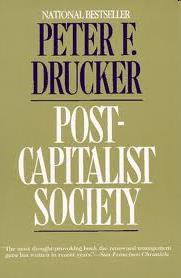
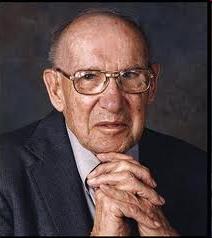
P.F. Drucker
We need an economic theory that puts
knowledge into the center of the wealth-producing process. Such a theory alone can explain the present economy. It alone can explain economic growth. It alone can explain innovation.
P. F. Drucker. (1993) "Post Capitalist Society" p.183
What is innovation?
Innovation means new value, or new way to
Innovation is change that creates a new
dimension of performance (Drucker).
Through innovation, organizations create
new value to contribute to the society and make their continuous growth possible.
Copyright 2016 Nonaka and Toyama
Three joys at Honda
Joy of Buying, Joy of Selling, Joy of Creating
Value is for customers.
Value is created out of your own value
Copyright 2016 Nonaka and Toyama
Innovation is Future Creation Process
To create a new value, an organization
envisions and realizes its unique future which no other envisioned.
By envisioning and creating new future
through knowledge creation, the organization transforms itself and change the world.
Copyright 2016 Nonaka and Toyama

Do you see future here?
Copyright 2016 Nonaka and Toyama
Ratan Tata saw Future
On a rainy day on the road of Mumbai, Ratan Tata saw a vast market for an affordable car for such families with low income.
He organized a team of young engineers to radically change the cost structure of car manufacturing. 85% of parts are outsourced; number of vendors were cut to 40%.
With module parts and the network of outside factories, "Nano", the $2,500 car was born.
Copyright 2016 Nonaka and Toyama
What is Knowledge?
In Western Epistemology:
"Justified True Belief"
The belief must be true,
and the truthfulness must be justified.
No Belief, No Knowledge
Copyright 2016 Nonaka and Toyama
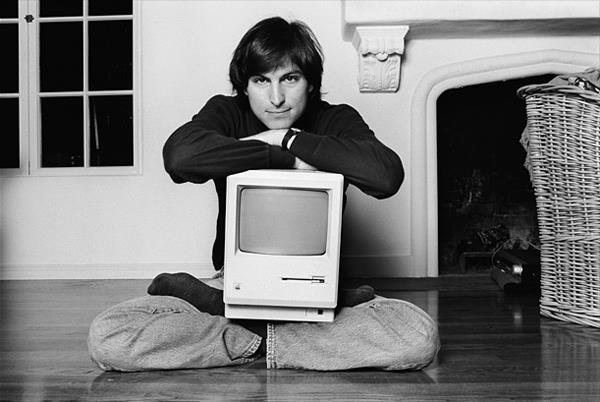
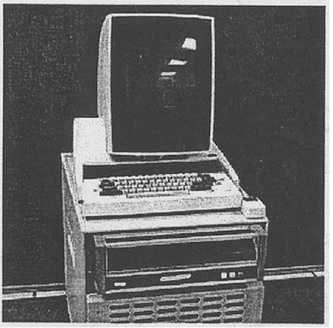
One‟s Belief Became "Truth"
In 1979, Jobs visited Xerox Palo Alto Research Center (PARC) and saw the first computer with a "mouse": "it was the best thing I‟d ever seen in my life. within ten minutes it was obvious to me
that all computers would work like this some day."
Source: Kahney, L. (2008). Inside Steve's Brain. Portfolio, NY: New York.
Copyright 2016 Nonaka and Toyama
Knowledge is created
from different perspectives
Human subjectivity interprets and reads
the meanings behind the facts/data.
It is the differences in such subjectivity
that creates new knowledge.
Differences make a difference.
Copyright 2016 Nonaka and Toyama
Knowledge Creation as a Dialectic Process
Knowledge expansion
Synthesize (Webster):
"The dialectic combination
Synthesizing Point
of thesis and antithesis into
a higher stage of truth".
It is not compromise, but
integration of opposing
aspects through a dynamic
Opposing Perspectives (gap)
Synthesis is achieved through dialogue and action based on shared context.
Copyright 2016 Nonaka and Toyama
"Myth" of Knowledge Management
Knowledge Management is.
Something to do with IT.
78% of IT systems introduction project fail. IT can help, but it is human factor that makes differences.
Copyright 2016 Nonaka and Toyama
"Myth" of Knowledge Management
Knowledge Management is.
Something that makes us efficient.
75% of Knowledge Re-engineering projects fail.
It is not just about efficiency (exploitation of existing knowledge), but also about effectiveness (exploration of new knowledge).
Copyright 2016 Nonaka and Toyama
"Myth" of Knowledge Management
Knowledge Management is.
Large-scale operation.
It can start small. It requires creativity and persistence, rather than large capital.
Copyright 2016 Nonaka and Toyama
"Myth" of Knowledge Management
Knowledge Management is.
Responsibility for the "smart people"
How we can get everyone's commitment to share their own knowledge and create new knowledge is the key to success. 82% of the reason to fail is organizational resistance
Copyright 2016 Nonaka and Toyama
Knowledge Management is.
Not "Managing Knowledge"
But "Knowledge-based Management."
Not a tool but a theory toward a new
paradigm in the Knowledge Economy
"Good theory is the most practical"
Copyright 2016 Nonaka and Toyama
Two Types of Knowledge
Tacit Knowledge
Explicit Knowledge
Subjective and experiential
Objective and rational
knowledge that can not
knowledge that can be
be expressed in words,
expressed in words,
sentences, numbers, or
sentences, numbers, or
Formulas (Context-specific)
formulas (context-free)
Technical Skills
Theoretical approach
know-how
Problem solving
Cognitive Skills
Database
perspectives
mental models
Dynamic Interaction
Analog-Digital Synthesis
Copyright 2016 Nonaka and Toyama

Tacit and Explicit Knowledge
A metaphor: Iceberg
Copyright 2016 Nonaka and Toyama
Tacit and Explicit Knowledge
"The strength of Japanese manufacturing industries are at the technologies (based on) tacit knowledge. With the progress in Information Technology (IT), tacit knowledge is converted into explicit knowledge. Still, we need tacit knowledge. To build a car, we have
to build people."
-Hiroshi Okuda, Former chairman of Toyota
Copyright 2016 Nonaka and Toyama
Knowledge Creation
Sharing and creating
Articulating tacit
tacit knowledge through
knowledge through
direct experience
dialogue and reflection
Explicit
Combination
Systemizing and
Learning and
applying explicit
acquiring new tacit
knowledge and
knowledge in practice
Explicit
information
Copyright 2016 Nonaka and Toyama
Underlying Methodologies of SECI
Combination
Learning through
Explicit knowledge
Copyright 2016 Nonaka and Toyama
Socialization: "Don‟t Think, Feel"
Empathizing: See things from others‟
viewpoints, share feelings and passion with others.
"Do not think for a customer. Think as a
customer." Seven-Eleven Japan
See things as they are.
Forget the past success or "common sense".
Copyright 2016 Nonaka and Toyama
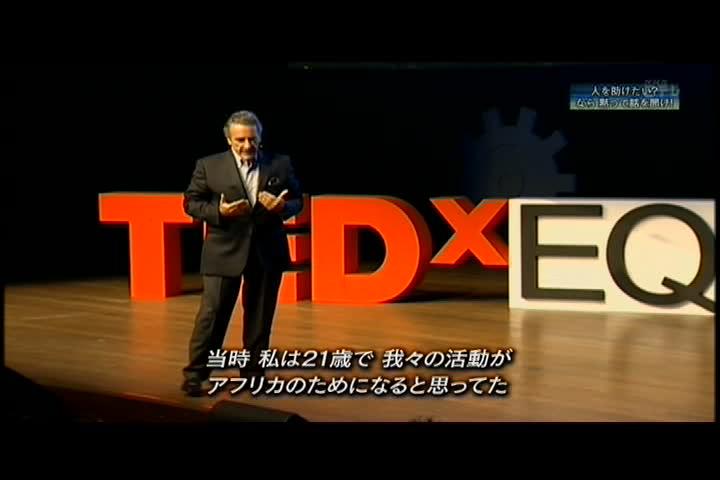
Shut up and Listen
: "Want to help someone? Shut up and listen!"
See Things as They are
The "untrapped mind" is open enough to see many possibilities, humble enough to learn from anyone and anything, forbearing enough to forgive all, perceptive enough to see things as they really are, and reasonable enough to judge their true value.
Konosuke Matsushita
Copyright 2016 Nonaka and Toyama
Eisai: Sharing Emotion with Patients and
"…what we should be doing as a human
health care company is making a meaningful contribution to any health care system. To do that, it is most important that we know and share the feelings of patients, their joys, anger, sadness, and happiness."
-Eisai Commitment to Innovation, 1989
Copyright 2016 Nonaka and Toyama

See things as they are: Hospital Training
Copyright 2016 Nonaka and Toyama
Simulated experience as the elderly
Copyright 2016 Nonaka and Toyama
See Things from Patients‟ Perspectives
What do you see?
Copyright 2016 Nonaka and Toyama
•Cure for the disease? •Hope? •Fear? •Worry? •Bad memory?
Need to "indwell" in the customers‟ world and see
things from customers‟ viewpoint. At the same time, a firm has to see things from the viewpoint that goes beyond that of customers
to offer value that would exceed the customers‟ expectations.
Copyright 2016 Nonaka and Toyama
Copyright 2013 Nonaka and Toyama
Underlying Methodologies of SECI
Combination
Learning through
Explicit knowledge
Copyright 2016 Nonaka and Toyama
Knowledge-based Business Model
Social Value and Sustainability
Knowledge Vision
Proposition
Customer
SECI Process
Phronetic Leadership
Multilayered Ba
Knowledge Vision
Vision of the ideal future: "We want to be…" Self-transcending: Not an extension of the present,
but looking the present from the vision of the future.
Gives the members of the organization the absolute
value to pursue "Truth, Goodness, Beauty"
A view that pursue common good: "What is the
value to the community?"
Copyright 2012 Nonaka and Toyama
Vision: Absolute Value and Common Good
Joy of Buying, Joy of Selling, Joy of Creating
"We believe that sincerely responding to
the changing demands of the world through The Three Joys will provide joy to society and make Honda a company that society recognizes and wants to exist."
-Honda Philosophy Handbook
Copyright 2012 Nonaka and Toyama
It might be just an idealistic talk, but…
Humans are purposeful beings who will
act to realize their dreams and ideals – and these are beyond mere preferences.
Optimal results are claimed to be
attainable only by trying for too much – by reaching beyond the limits of the possible.
Copyright 2012 Nonaka and Toyama
Knowledge-based Business Model
Social Value and Sustainability
Knowledge Vision
Proposition
Customer
SECI Process
Phronetic Leadership
Multilayered Ba
Ba is open space-time with meaning
Ba is an open space-time where meaning is created
through relationships with others, i.e. context. Ba is not a mere physical space.
Context is the relation or situation at particular time,
space, people, and things. When the context is shared, shared- sense is created.
When ba is created, people empathize their values
and feelings with others, and create a meaning that transcends themselves in such open and permeable relationships.
Copyright 2012 Nonaka and Toyama
Ba is Based on Shared Experience of
Here and Now
Knowledge
Shared Context
Ba(場)
Individual contexts are shared at "here now" context of Ba.
Shared context becomes the base of emerging knowledge.
Copyright 2012 Nonaka and Toyama
Conditions of Good Ba
Self-Organizing with shared objectives Sharing sensitivity, senses, and emotion
through direct experience.
Social Capital – care, love, trust, and
Commitment Permeating Boundary Diversity of knowledge and efficient
Copyright 2012 Nonaka and Toyama
The way we work at Apple is that the complexity of
these products really makes it critical to work collaboratively, with different areas of expertise. I work with silicon designers, electronic and mechanical engineers, and I think you would struggle to determine who does what when we get
together. We‟re located together, we share the same goal, have exactly the same preoccupation with making great products.
One of the other things that enables this is that
we‟ve been doing this together for many years - there is a collective confidence when you are facing a seemingly insurmoutable challenge.
Senior Vice President of Industrial Design, Apple
Copyright 2016 Nonaka and Toyama
Small World Network:
Rewiring the multilayered Ba
Through rewiring, far apart ba can be connected to each other to find new combinations and create new knowledge.
Copyright 2016 Nonaka and Toyama
Connect People and Change the World
Melt down the barrier and transform to membrane, instead of breaking down the walls; connect people and change the world. From problem solving to value creation.
Knowledge-based Business Model
Social Value and Sustainability
Knowledge Vision
Proposition
Customer
SECI Process
Phronetic Leadership
Multilayered Ba
The Knowledge Leadership…
Drives the dynamic process of knowledge creation by:
– providing knowledge vision and driving objective – developing and promoting the sharing of knowledge
– creating, energizing, and connecting ba – enabling and promoting the continuous spiral of
knowledge creation through dialogues and practices
At the base of such leadership is Practical Wisdom
Three Types of Knowledge
Episteme (Scientific Knowledge)
Universal, context-free and objective knowledge (explicit knowledge)
Techne (Skills and Crafts Knowledge)
Practical and context-specific technical know-how (tacit knowledge)
Phronesis (Practical Wisdom)
Experiential knowledge to make context-
specific decisions based on one‟s own value/ethics (high quality tacit knowledge)
What is Practical Wisdom
• A virtuous habit of making the "right" decisions
and taking "right" actions in the particular context with values and ethics that serve the common good.
• A capability to find a "right answer" in particular
Contextual Judgment Timely Balancing
• Can acquire only through high quality direct
experiences with contemplation.
Strategic Objective of US Marine in the
21st Century
"the making of Marines who possess
the judgment, strength of character, and ability to make sound, timely, and independent decisions in a chaotic environment that is likely to
constantly change."
Marine Corps Strategy 21
Six Abilities to Foster Phronesis
6. Ability to foster
1. Ability to make
phronesis in others.
judgment on goodness.
5. Ability to
2. Ability to
exercise
create ba.
political power
3. Ability to grasp the
4. Ability to articulate
essence of particular
the essence.
Source: Nonaka & Takeuchi, HBR May 2011
Copyright Nonaka, I. 2011
Phronetic Leadership
1. Ability to make a judgment on goodness
Every sort of expert knowledge and every inquiry, and similarly every action and undertaking, seems to seek some good.
Aristotle, Nicomachean Ethics
Example: Self-sufficient values such as happiness and self-actualization.
Purpose Setting:
Need for Philosophy
"Philosophy is more important than
technologies. Such things as money and technologies are just means to serve
people…There is no meaning to a technology if it does not consider people at
the basis of it."
"What drives a firm‟s growth is philosophy
…A true technology is a crystal of
-Soichiro Honda
Phronetic Leadership
2. Ability to share contexts with others
to create ba/shared sense.
Imaginative capacity to understand and
empathize with others through daily verbal and nonverbal communication, to read the situation to judge the best timing for interaction, and to elicit empathy in return.
Phronetic Leadership
3. Ability to perceive the reality as it is.
The ability to recognize the constantly changing
situation correctly, and quickly sense what lies behind phenomena to envision the future and decide on the action to be taken.
Phronetic Leadership
4. Ability to articulate the essence
The ability to conceptualize and articulate
subjective ideas in clear language, link these „micro‟ concepts to a macro historical context and convincingly articulate them as vision and story for the future.
Harmonize the Concepts in ba
/ Make Full Use of Metaphor
Soichiro Honda & Steve Jobs
Source: Honda Motor Company
Copyright Nonaka, I. 2011
Phronetic Leadership
5. Ability to exercise political power
The ability to bring people together and spur them to action, combining and synthesizing everyone‟s knowledge and efforts in pursuit of the goal, by choosing and utilizing the means suitable to each particular situation with shrewdness and determination.
Making Political Judgment
Reality is dynamic and full of confusion and
Phronetic leaders exercise political judgment
in such a process by understanding others‟ emotions, and by giving careful consideration to the timing of their interaction with others.
Leadership to Exercise Political Power
Reality Distortion Field
The reality distortion field was a confounding mélange of a charismatic rhetorical style, and indomitable will, and an eagerness to bend any facts to fit the purpose at hand. In one line of argument failed to persuade, he would deftly switch to another. Sometimes, he would throw you off balance and suddenly adopting your own position as his own, without acknowledging that he ever thought differently.
Source: Karney, L. (2008). Inside Steve's Brain (expanded edition). pp.162-163
Keep Communicating
"Persuasion is important. Our goal is to
move forward through reform, and in many cases, reform means destruction of the status quo. […] Persuasion is necessary to turn those who oppose such reform positive and bring out their efforts."
-Fujio Mitarai, CEO of Canon
If you want to communicate your thought to your subordinates, you have to say it with passion, say repeatedly, and explain why you are saying it.
Konosuke Matsushita
Phronetic Leadership
6. Ability to foster phronesis in others
The ability to create a system of distributed
phronesis by fostering and transferring the existing phronetic capabilities of individuals to others to build a resilient organization which can respond flexibly and creatively to any situation to pursue its own good.
Mobilizing Everyone‟s Knowledge
"Management by all the members of the
company, through mobilizing their knowledge, is what I have been trying to achieve as a CEO. The more we utilize everyone‟s knowledge, the better the company becomes."
Konosuke Matsushita
Mobilizing Everyone‟s Knowledge
Until senior management gets their egos out of
the way and goes to the whole team… goes to
all of them and leads them all together… then senior management will continue to miss out on the brain power and extraordinary capabilities of all their employees. As you can see, the contrasts are not high-tech or exotic in any way. At Toyota, we simply place the highest value on our team members, and do the best we can listen to them and incorporate their ideas into our planning process.
Alex Warren, former SVP, Toyota Motor Mfg. Kentucky
Middle-up-down Knowledge-creation Process
Grand Theory (What ought to be)
contradiction Mid-range theory
(Middle)
Reality (What is)
of Knowledge
Copyright 2016 Nonaka and Toyama
Fostering Phronesis
•Present the issues to be worked out •Constantly ask the question „what is
•Provide examples in each situation
that can teach the phronetic way of thinking in practice
Idealistic Pragmatist:
Contemplation in Action
Deep Thinker
in One Person
"Intellectual Muscle"
Relentless Pursuit of Common Good
Knowledge Creation is.
A Self-transcending Process
"Self-Transcendence means reaching out beyond the
boundaries of one‟s own existence (Jantsch, 1980) Through knowledge creation, one transcends the boundary between self and other. Through knowledge creation, one changes oneself, and the environment in which one acts and interacts.
Adapting to Changes
"It is not the strongest of the species who
survive, nor the most intelligent, but
those who are most adaptive to change"
Charles Darwin
Leading Changes = Creating Future
In a period of rapid structural change, the only ones who survive are the
change leaders. […] To make the future is highly risky. It is less risky, however, than not to try to make it. A goodly proportion of those attempting to will surely not succeed. But predictably, no one else will.
Peter Drucker, 1999
Knowledge Creation is.
A Continuous Process
It‟s a never-ending process!
Source: http://www.dap.edu.ph/pmdp/wp-content/uploads/2016/09/Session-4-Phronetic-Leadership-by-Ryoko-Toyama.pdf
St. PETER'S UNIVERSITY St. Peter's Institute of Higher Education and Research (Declared under section 3 of UGC Act 1956) Avadi, Chennai – 600 054. M.Sc. (CHEMISTRY) PROGRAMME (Full Time) (I to IV SEMESTERS) REGULATIONS AND SYLLABI REGULATIONS – 2014 (Effective from the Academic Year 2014-'15)
Is it Prozac? Or Placebo?New research suggests that the miracles promised by antidepressants may be largely due to theplacebo effect. Too bad there's no money to be made in sugar pills. Janis Schonfeld recalls the events that started her on her recovery from 30 years of depressionwith snapshot clarity: the newspaper ad she saw in 1997 seeking subjects for an antidepressantstudy; the chair she was sitting in when she called UCLA's Neuropsychiatric Institute; the windowshe was looking out of when she first spoke with Michelle Abrams, the research nurse whoshepherded her through the trial. She remembers being both nervous and hopeful when shearrived at the institute, and a little uncomfortable when a technician put gel on her head, attacheda nylon cap shot through with electrodes, and recorded her brain activity for 45 minutes. Butmost of all she remembers getting the bottle of her new pills in a brown paper bag from thehospital pharmacy. "I was so excited," she told me. "I couldn't wait to get started on them."















